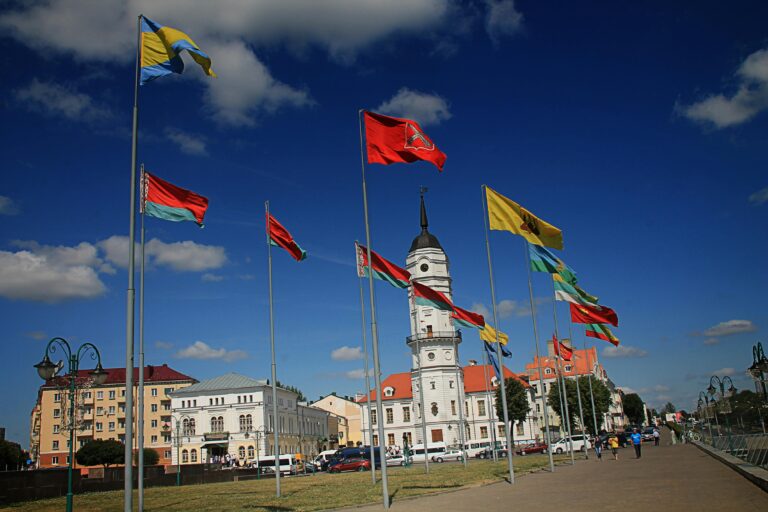Flags are a powerful expression of national identity, each bearing unique colours, symbols, and patterns that reflect the story of a country. But some flags, either by historical coincidence or shared cultural heritage, end up looking strikingly similar. Below, we explore countries with flags so alike that they’re often confused, highlighting the symbolism and history behind each one.
1. Romania and Chad
Romania and Chad have nearly identical flags, consisting of three vertical stripes in blue, yellow, and red. The only difference is a subtle shade variation in the blue, with Chad’s blue being slightly darker. Romania adopted this tricolour in 1867, symbolising liberty, justice, and fraternity. Chad, on the other hand, adopted its flag in 1959 after gaining independence from France, choosing these colours partly due to inspiration from the French tricolour and partly to symbolise hope, sunshine, and the blood of those who fought for freedom. Despite Chad’s requests to change the colours over the years, Romania has not altered its flag, leaving both countries with near-identical designs.
2. Indonesia and Monaco
The flags of Indonesia and Monaco both feature a simple design of two horizontal bands – red on top and white on the bottom. Monaco’s flag, adopted in 1881, has a long history tied to the heraldic colours of the Grimaldi family, which has ruled the principality for centuries. Indonesia’s flag, on the other hand, was adopted in 1945 and represents courage (red) and purity (white). The only difference lies in the flag’s dimensions; Indonesia’s flag is slightly longer. However, in international settings, it’s still challenging to tell them apart at a glance.
3. Luxembourg and the Netherlands
Luxembourg and the Netherlands share flags with horizontal stripes of red, white, and blue. The colours are the same, but there are some differences in the shade and proportion. Luxembourg’s blue is lighter and more cyan-toned, while the Netherlands has a deeper blue and uses a 2:3 proportion compared to Luxembourg’s 3:5. Both flags stem from the historical use of these colours by their respective regions. The Netherlands was one of the first to adopt this tricolour in the 17th century, and Luxembourg’s design evolved separately but ended up with a similar look.
4. Ireland and Côte d’Ivoire
Ireland and Côte d’Ivoire have flags featuring three vertical stripes in green, white, and orange. While the colour order is the same, the orientation differs: Ireland’s green stripe is on the left, while Côte d’Ivoire’s green stripe is on the right. Ireland’s flag, adopted in 1922, represents peace (white) between Catholics (green) and Protestants (orange). Côte d’Ivoire adopted its flag in 1959, with the green symbolising hope, white for peace, and orange for the savannah regions. Their similar designs often lead to confusion in international events, particularly when displayed without a flagpole.
5. New Zealand and Australia
The flags of New Zealand and Australia both feature the Union Jack in the top-left corner, symbolising their historical connection to the British Empire. Both flags also have stars representing the Southern Cross constellation, a prominent feature of the southern skies. However, the stars differ slightly in number and design. Australia’s flag includes an additional Commonwealth Star below the Union Jack, with the Southern Cross depicted with white stars of varying sizes. New Zealand’s flag, on the other hand, has only four red stars with white borders. Efforts have been made in New Zealand to change its flag to avoid confusion, but referendums have not resulted in a new design.
6. Norway and Iceland
Norway and Iceland both use flags with a Nordic cross, a common design among Scandinavian countries. Norway’s flag is red with a blue cross outlined in white, while Iceland’s flag is blue with a red cross outlined in white. Norway adopted its flag in 1821, inspired by Denmark’s red and white colours and influenced by the French Revolution’s ideals of liberty. Iceland’s flag, adopted in 1915, chose blue for the ocean, white for glaciers, and red for volcanic fire. Despite the different symbolism, the shared Nordic cross pattern reflects their geographical and cultural ties.
7. Qatar and Bahrain
Qatar and Bahrain both have flags featuring a distinctive serrated edge that separates two main colours. Qatar’s flag is maroon and white, while Bahrain’s is red and white. Bahrain’s flag has five white points representing the five pillars of Islam, while Qatar’s flag, with nine points, symbolises it as the ninth member of the reconciled Emirates in the Arabian Gulf. Qatar’s maroon tone is darker than Bahrain’s red, but the similarity remains unmistakable, often causing mix-ups when displayed from a distance.
Flags can serve as windows into a nation’s history, culture, and values, but as we’ve seen, they can also lead to confusion. From European neighbours to African countries and Pacific islands, these nations’ flags tell a fascinating story of commonalities, influences, and the fine lines between them.
Share on:
- Click to share on Facebook (Opens in new window) Facebook
- Click to share on X (Opens in new window) X
- Click to share on Pinterest (Opens in new window) Pinterest
- Click to share on WhatsApp (Opens in new window) WhatsApp
- Click to share on LinkedIn (Opens in new window) LinkedIn
- Click to email a link to a friend (Opens in new window) Email


